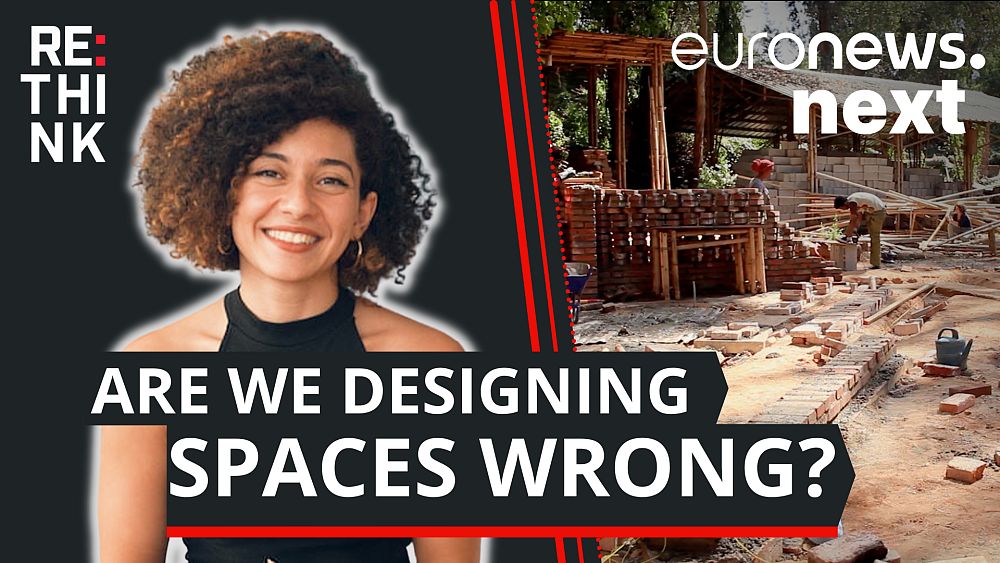How putting vulnerable communities first can lead to better urban design


What’s the most important thing when designing an urban space? According to Meriem Chabani, it’s asking the right questions.
“The first thing we need to take into account is the need,” said the French-Algerian architect and urban planner. “If we do not understand very specifically what we are trying to achieve, we are certain to fail. There’s no need to have the perfect answer to the wrong question”.
Asking the right questions has been a major goal in Chabani’s career, inspiring her to acquire the tools to carve out her own space in urban design.
That desire led her to co-found New South, a Paris-based architecture and urban planning practice.
Chabani says New South aims to “bring vulnerable communities to the centre of city-making” by conducting anthropological research to inform built projects around the world.
From the margin to the centre
One of the biggest mistakes many architects and urban planners make, Chabani says, is designing for the majority, or those with the most social capital.
“I believe that the most careless thing that we do in design right now is thinking that there is a standard body for which we are designing,” Chabani told Euronews Next.
“Obviously we are excluding a variety of bodies, whether they are able-bodied, disabled, different genders, ages”.
This exclusionary, Eurocentric vision can be harmful to local populations, Chabani says. She points to urban renewal projects that demolish big apartment buildings considered “eyesores,” only to end up destroying the communities that live there.
“Urban planning is a very powerful tool to control the distribution of a population, who gets to live where,” she said.
Frustration with this status quo triggered in her an urge to take a different approach that brings people in the margin to the centre, Chabani says, quoting American feminist writer bell hooks.
That’s been the driving force for New South’s projects, which range from designs for sacred spaces to private commissions to housing.
Redefining design terms
Sometimes even the language used in design is inappropriate for the environment where it’s taking place, Chabani says.
In 2016, she led New South’s research cycle into housing in Africa, a project called ‘Membrane: An Odyssey in Domestic Space’.
She and her colleagues deliberately avoided the word “house,” instead focusing on the actions taking place in different living areas to determine how to design better housing in modern African cities.
The first of several workshops took place in Addis Ababa with Ethiopian architecture students.
Chabani said that once they removed English words like “bedroom” and “kitchen” and asked students to instead focus on how different spaces were being used, the conversation changed drastically.
“We would have people describing sleeping in places that we would not necessarily associate with sleeping, for example, the kitchen,” Chabani said. “Taking away the English words, bringing in Amharic local words, we realised that different spaces and ultimately different architecture was possible. By looking at local practices and local uses of space, we can reinvent how we design architecture”.
The politics of public space
New South defines its practice as “decolonial,” which Chabani says means understanding dynamics of power and the intricate connection between politics and public space.
Urban spaces are deeply political, Chabani says. They are places for people to gather freely to exchange, celebrate, to protest. She believes it’s the duty of architects and urban planners to advocate for those types of spaces when designing.
In 2019 Chabani helped negotiate the creation of a new public space in central Myanmar when New South was selected to design a cultural centre in the rural municipality of Taungdwingyi.
The facility was commissioned by a group of local investors, who wanted to give back to the community that contributed to their success.
“There was no funding for public space in that area,” Chabani says. “And we felt like this was a good opportunity to channel private funding into the creation of a public good of common ground”.

Instead of creating a plaza, which the client feared could lead to congestion from parked cars, the team designed an open-air staircase that wrapped around the building. People could walk and sit on the stairs without needing to enter the building.
In 2021, after a military coup in Myanmar sparked protests across the country, Chabani says local contacts started sending her photos of protesters gathered on the steps of the still-scaffolded building.
“They were using the space and that staircase to sit down and to use as a place to gather and conduct a collective protest in the city,” she said. “When we saw that, we felt that we had gotten something right”.
A new reality to design for
On top of the social and economic benefits that come with designing for the most vulnerable, there are also very real practical implications tied to climate change.
As the planet warms, architecture will have to adapt and building techniques that have been used for hundreds of years in hotter climates could hold the key to the future of sustainable urban design.
Chabani says that it’s essential to reinvest in these techniques, including using local materials, or designing to make sure buildings ventilate naturally and avoid overheating.
“The Global North is becoming a South,” Chabani said. “All of these techniques have been around for hundreds of years. It’s about reinvesting in them now and giving them the value that they deserve”.
For more on this story, watch the video in the media player above.
Video editor • Ivan Sougy
Additional sources • Motion Designer: Matthew Ashe




Leave a Comment